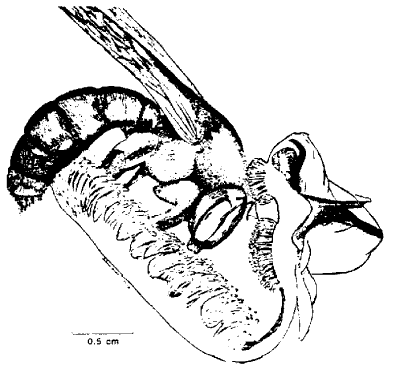 |
Science Frontiers ONLINE No. 12: Fall 1980 |
|
|
Oh, those clever plants
The Lecythidaceae or Brazil nut family is pantropical in distribution. Some members of this family produce two dif ferent kinds of pollen: (1) normal pollen for fertilization; and (2) nongerminating pollen that is collected by insects for food. The latter variety of pollen is considered (anthropomorphically) as the plant's way of rewarding insects for carrying the fertile pollen to other plants. As in so many of Nature's remarkable adaptations, the two types of pollen are located in exactly the right portions of the flower to match the anatomy of the foraging insect. In the figure, a carpenter bee collects infertile pollen from the bottom of the flower while being dusted on the head and back by the regions of the fertile pollen.
(Mori, Scott Alan, et al; "Intrafloral Pollen Differentiation in the New World.. ..." Science, 209:400, 1980.)
Comment. How can the flower, even over many generations, determine that only the pollen from the upper portion is being used for fertilization and that the lower area of pollen may safely "be allowed" to become infertile?
